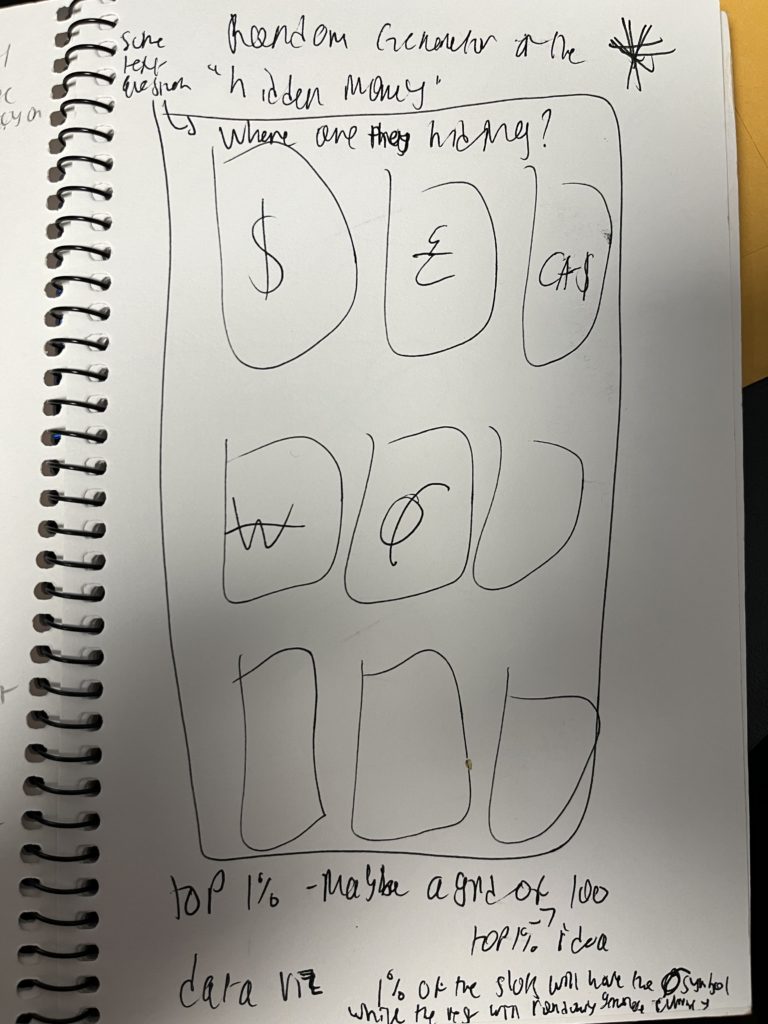For our design system poster project I decided to focus on the idea of the invisible “1%” often mentioned in the media.
At first when we were assigned this project I was overwhelmed by choice as we live in a time where everything seems like a political issue of great importance. So my first step was to narrow down my options and find some inspiration. I walked through my local library and happened upon a book of symbols discussing the history of popular history. Looking through the book led me down the internet rabbit hole as I spent time looking through political symbols. In my travels I stumbled upon a circle with some sort of a crowbar like hook running through its center. This was called a Hobo Sign for “Hidden Money”.

Symbols.com.
Background
Hobo Signs were used by people of the 19th and 20th century who were known for their controversially transitory way of life. These people often referred to as “hobos” were often houseless by choice (i.e Civil War Veterans who took jobs with expanding railways) or by force (i.e those who lost their homes and livelihoods as a result of the Great Depression). These laborers traveled with the seasons following work in railroads, mining or lumber. In modern times to some these migration-led workers would be known as some of the people who built this country and maintained their freedom while doing it but in their times they were often disparaged by the communities they came to…. sound familiar?
As a result of the constant harassment those known as “hobos” faced, they came to create their own community and with community often comes language. This language came in the form of Hobo Signs which were used to inform other hobos of the characteristics, dangers, and opportunities of the places they traveled to. The sign I happened upon was used by hobos in France to inform each other where their may be money hidden at a residence or a special location frequented by other hobos.
When I saw this symbol something that struck me was how much the line running through a figure in the center reminded me of the American currency symbol for the dollar “$”. I began to do my research and found that this trait is found in many different currencies around the world.

Naturally, this got me thinking about money and secrecy. I can’t say if this coincidence is anything more than a coincidence but it peaked the little part of my brain that watched the entirety of Adam Curtis’ 6 part series Cant Get You Out of My Head. All this to say it was giving conspiracy. I do not believe in conspiracy’s but I do believe in peculiar connections. The “1%” is characterized as the richest demographic of the global population. According to the Credit Suisse Global Wealth Report, the 1% own 45.8 percent of the world’s wealth.

But who are they?
Since the Covid-19 Pandemic there has been an incredible amount of media attention dedicated to this powerful yet quiet minority. Other than heavy hitters such Elon Musk and Kanye West, these 42 million people are relatively quiet and discreet. Who is this hidden minority that own half the world wealth? What are the signs and symbols they use to communicate with each other? Is there power in their anonymity?
So I took these ideas and ran with them. I made a few sketches thinking of how I could connect the two symbols and eventually use it to create a design system confronting these questions of wealth, symbols, secrecy, and scale.

After I made by sketches I began to work on my code. I used Tega Brain’s example of Rune Madsen’s Easy Grid utility to create a dynamic layout. My idea was to create a grid of 100 cells including various currency symbols from around the world. Specifically those nations which have most of the worlds global wealth or seemingly the most political power, amongst those I included the Hobo sign for Hidden Money.

https://editor.p5js.org/Ericka10635/sketches/KAIRZyEQE
In my initial idea of for my Design system the grid would house 100 cells populated with the various symbols but the Hidden money sign would only have a 1% probability of showing up. However as I continued to work on it I decided to make it so that my grid would expand by 10x cells and unpredictably show they symbols across the grid. So if there was first a grid of 100 cells with only 1 being the hidden money sign, after mousePress the grid would now be 1000 cells with 10 being the hidden money. Thus representing a hidden 1%. Although this grid showed variation there wasn’t enough perceived difference between the frames. I then worked on it with Tega and we were able to make the new grid overlay the old one each time you press the mouse. This caused each iteration to become more and more obscured from the original image until it just creates a haze of noise.

Using this final product I designed my poster using four iterations from the design system. In the center is the original with 100 cells and on the top and right side are the next three iterations with 1,000, 10,000, & 1,00,000 cells. The poster asks its viewer “Where Are They Hiding”. They meaning hidden money sign, the rest of the currency’s that were obscured and rendered obsolete in the process of scale, and that 1% that we so often hear about.

Where Are They Hiding? Risoprints





/u/crypto_museum/. “Hobo Signs at the National Cryptologic Museum on Virmuze.” At the National Cryptologic Museum on Virmuze, https://virmuze.com/m/crypto-museum/x/hobo/.
Brain, Tega. “Dynamic-Grid.” P5.Js Web Editor, https://editor.p5js.org/brain/sketches/rfKLEQX2F.
Hidden Money, https://www.symbols.com/symbol/hidden-money.
Matthews, Dylan. “Are 26 Billionaires Worth More than Half the Planet? the Debate, Explained.” Vox, Vox, 22 Jan. 2019, https://www.vox.com/future-perfect/2019/1/22/18192774/oxfam-inequality-report-2019-davos-wealth.